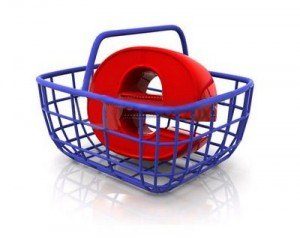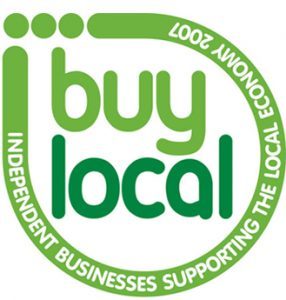Attended a most interesting INSEAD breakfast presentation last week by François Momboisse, President since 2002 of the FEVAD (the association covering eCommerce and distance selling in France). François is also head of international digital operations for the FNAC (a leading retailer of high tech and cultural goods). Herewith a little state of the e-business in France.
eCommerce in France which has lagged most of the “developed” countries in Europe has been in catchup mode for the last several years. Despite a moribund economy, eCommerce (as measured by the FEVAD) reached 25€ billion in 2009, up 25%. In the 2Q of 2010, eCommerce grew 28% in France and is projected to grow overall a further 24% in 2010. Still, eCommerce in France remains half the size of that in the UK. That said, eCommerce constitutes 13% of total sales for businesses in France (excluding finance sector) compared with the European Union average of 12%*; and it represents 4.5% of retailers’ business in France. If France is still lagging somewhat in terms of internet penetration at 63% of households, 71% of these purchased on line in 2009, well above the EU average of 57%.
Among François’ comments on eCommerce in France, here are the key thoughts:
-
- French internet users have a high degree of confidence in eCommerce (62%) and a very high level of satisfaction (97.7%) — presumably led by the extremely rigorous Amazon (which lies #4 in France in total e-sales).
- The number of eCommerce sites has mushroomed, now numbering a total of 70,200, +29% in the last 12 months. In other words, it is not just the major players who have opened up to eCommerce, but smaller companies who are getting into the fray. Also, this means that the growth in eComm is not just organic.
- Other than eBay and Amazon, the 15 top players in France are local. And the same is generally true throughout the developed countries (other than smaller countries such as Ireland, Austria, Belgium that are surrounded by bigger countries with a shared language).
- Together, England, Germany and France represent 50% of the total eCommerce business in Europe.
- Just as in the brick & mortar world, to succeed, eCommerce sites ought “to stand for something” — define one’s position clearly.
- Fraud represents 0.26% of the transactions in France (versus 0.4% in England).
- Rate of returns is not publicly shared, but François mentioned that in Germany there is a historical reason why returns are much higher, relating to the post-WWII environment where the government encouraged distance selling and a lax returns policy to overcome the lack of physical stores that had been destroyed in the war.
- Google has beta launched Google Products, its own price comparison site, which has just this week been launched in France and is likely to cause a major risk for existing local price comparison sites.
With my eye on sustainable development, I was quite surprised to see, according to a 2007 study by Estia/Fevad, the figure of 800,000 tons of CO2 equivalent saved over the course of a year by consumers making their purchases on line (as opposed to driving to the store themselves, etc.). It would require 54,500 hectares (134K acres) of forest to absorb that CO2 which represents about half the size of the moors of Dartmoor (for those of you living in England) and, ironically, happens to be exactly the amount of land owned by Prince Charles around 23 countries in the world.
If eCommerce is growing rapidly, it is not necessarily a profitable venture. To begin with, to succeed, logistics are absolutely vital. With Amazon blazing forward and setting the industry bar very high in terms of customer support and service, I can see many companies falling into the trap of eCommerce, believing it represents the eldorado to compensate for the business ills. However, it is a very exacting business to implement and requires a strong mobilisation of the entire company to get right. Companies that know how to manage well customer service in the brick & mortar retail environment will have a better chance to creating a successful eCommerce. The other way round is much more risky. With the outsourced models (via Amazon or eBay), there are easy ways to get started. But, a successful and profitable eCommerce site is easier said than done.
*Eurostat community study on new technologies, 2009













It's interesting to notice that web payment frauds are still about 20 times higher than in store face to face and that this fraud level ratio web vs f2f in each country remains somewhat constant (France having one of the lowest POS frauds level in the world due to its heavy investment in chip based solutions since the 90's). About logistics, it is interesting to add that Amazon pays about one seventh of the standard price for La Poste's chronoposts due to its sheer size. Reason why a lot of small sellers have a good reason to sell through Amazon and increase Amazon's offer and choice. Clever…
The results of this study from the ESTIA and FEVAD are interresting and quite hopeful in terms of sustainable development. However i would like to question those numbers. I read the study and it seems that there is one phenomena that has not been taken into consideration.It seems that, especially regarding electronic goods, consumers buying on the internet like to drive to the store first, in order to have look at the product.
Never the less I truly beleive that investing in new technology will surely help us decrease our impact on the environment. But i also think that if we really want to make a change we need to change our ways of life by consumming less but better.
I clearly agree with Edgar about those figures. I wonder how they find the '800 000 tons of CO2 saved' in order to know how to interprete it. I agree with the fact that e-business saved CO2 emissions but a e-commerce company still has to use a car to deliver the product to the customer. So I wonder if the '800 000' figure considers that ?
@Marc: Amazon indeed opens up opportunities for the smaller companies… On top of that, its logistics are marketing leading in terms of quality.
@Morgane and Edgar: Well, I think you are right to question these numbers. As always, there are so many ways to skin a cat… Intuitively, it is hard to say especially when you consider the massive amount of cardboard being used (on top of the resources used for transportation, etc.)